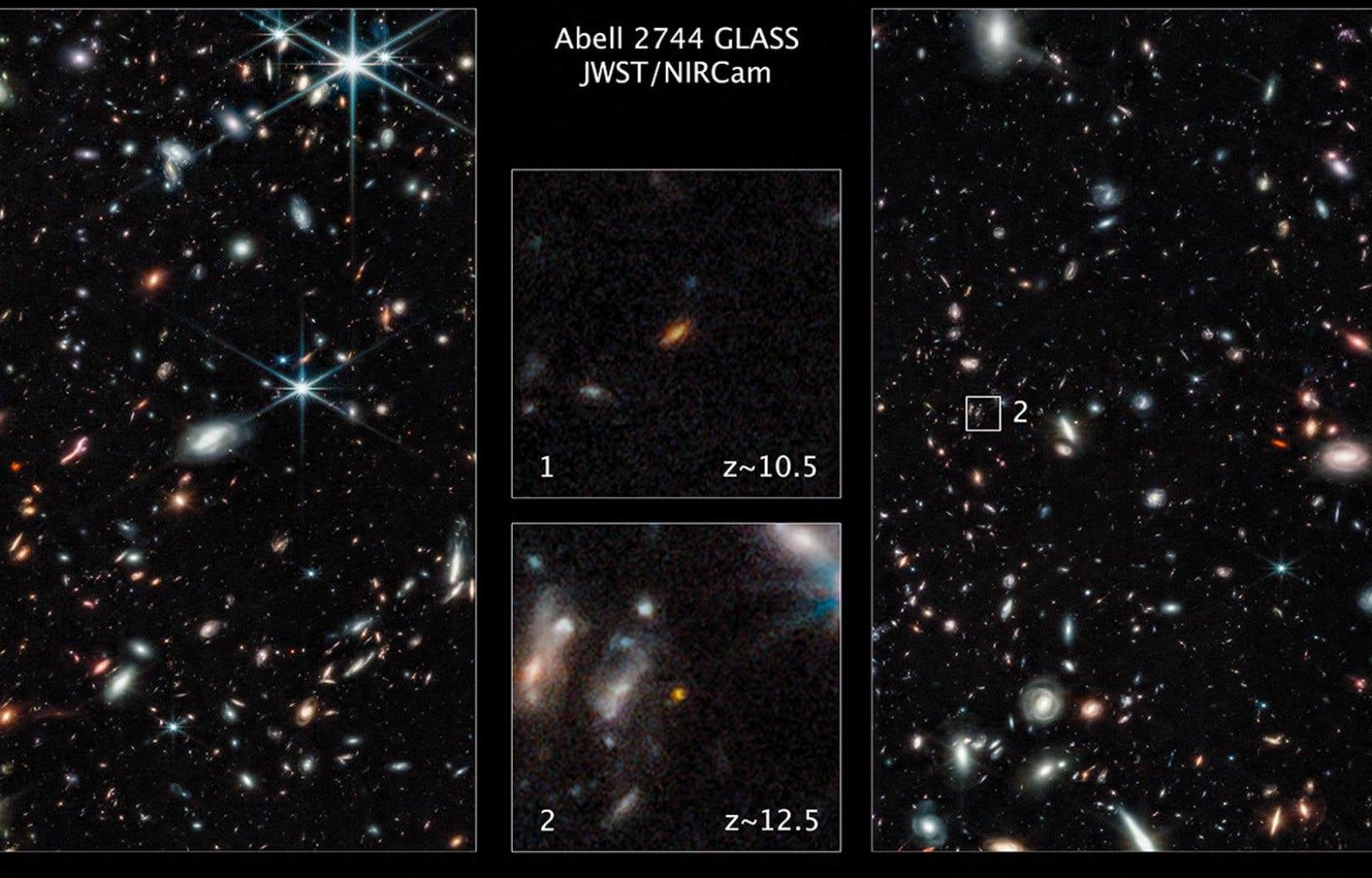The James Webb Space Telescope has observed the most distant galaxy ever detected, which formed in the earliest ages of the Universe, just 320 million years after the Big Bang, according to studies released Tuesday.
The more the galaxies are distant, and therefore young, the more they are difficult to detect as their light signal is weak. The first surveys of the James Webb Telescope (JWST), in service since July 2022, had identified many “candidate” galaxies in the infrared, a wavelength invisible to the human eye and whose observation allows us to go back a long way. in the past.
The powerful infrared vision of its NIRCam imager, combined with observations in spectroscopy which analyzes the light coming from an object to determine its chemical elements, confirmed “unambiguously” the existence of four galaxies. All located towards the red end of the spectrum, therefore very distant.
Their age: between 300 and 500 million years after the Big Bang (which occurred 13.8 billion years ago), detail two studies published in Nature Astronomy. The Universe was then only 2% of its current age, in its so-called reionization period: after a so-called dark ages period, it kind of reignited and began to produce an enormous number of stars.
The most distant of the galaxies flushed out by the JWST, dubbed JADES-GS-z13-0, would have formed “320 million years after the Big Bang”, and its light is the most distant ever observed by astronomers, explained to AFP Stéphane Charlot, of the Institute of Astrophysics of Paris, one of the authors of the study.
To (re)see | James Webb Telescope discovery challenges current models of cosmology
“Tower of Strength”
The space telescope also confirmed the existence of the galaxy GM-z11, which it dated to 450 million years after the Big Bang, and whose presence the Hubble telescope had detected.
The four galaxies observed are very low in mass – around a hundred million solar masses, against, for example, 1500 billion for the Milky Way. But these galaxies are “very active in star formation, in proportion to their mass”, details the astrophysicist.
The formation of stars would take place there “at about the same rate as the Milky Way”, a speed “surprising so early in the Universe”, comments this CNRS researcher. Another lesson is that these galaxies are “very poor in metals”, a discovery consistent with the standard model of cosmology: the closer we get to the origins, the less the stars have had time to form these complex molecules.
The JWST observation is “a technological tour de force”, welcomes Pieter van Dokkum, an astronomer at the American University of Yale, in a comment attached to the study. The telescope pushes back “almost every month the frontiers of exploration”, always going further into the Universe, he underlines.
Last February, the instrument developed by NASA observed a population of six galaxies between 500 and 700 million years after the Big Bang, which seem much more massive than expected. If the existence of these galaxies were confirmed by spectroscopy, it could call into question part of the theory on the formation of the Universe.
